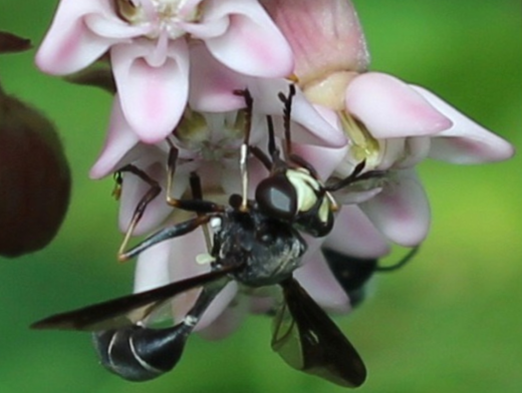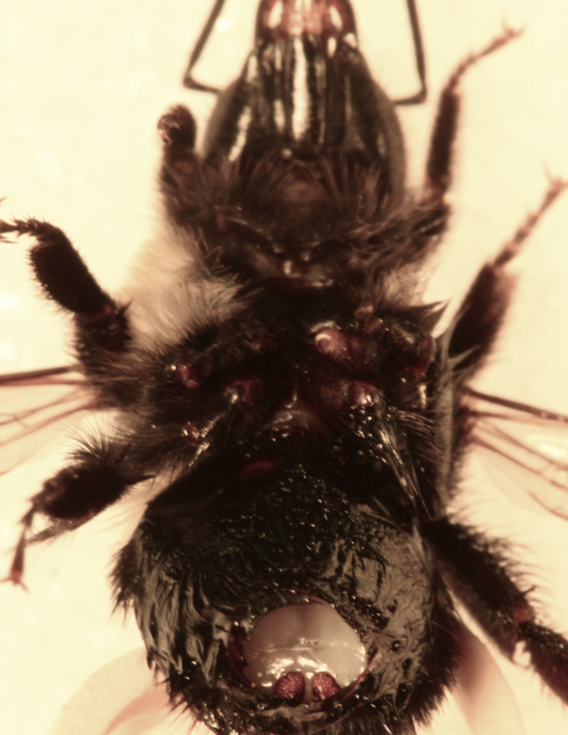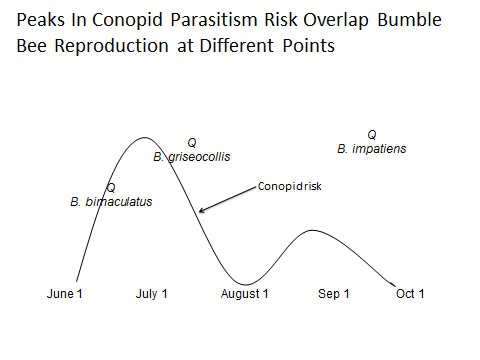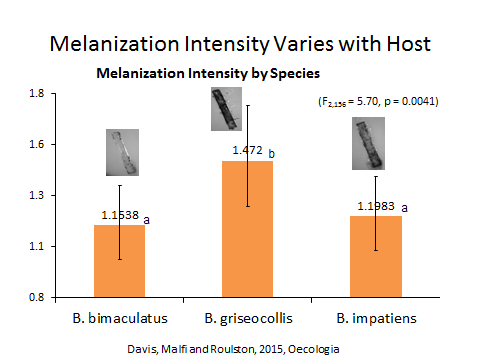|
Natural threats among the flowers lurk. Dr. T'ai Roulston delves into the somewhat macabre world of bumble bee parasitism by conopid or thick-headed flies. Bumble bees (Genus: Bombus) are of special conservation concern. At least five of North America’s 50 Bombus species are either vulnerable or in sharp decline. High losses are alarming because bumble bees are the most ecologically dominant and economically valuable group of wild pollinators. Human-induced drivers of bee declines include climate change, land degradation, and pesticide exposure. Natural threats also lurk and are reminiscent of a classic horror film – body snatching by parasites.
Dr. Roulston’s research provides grisly natural history details while elucidating complex ecological interactions. His work on parasite prevalence and dynamics between conopid flies and their bumble bee hosts helps us better understand how key drivers of bee declines are interconnected. The broader significance of this work can contribute to pollinator conservation efforts. Click here to learn more about his exciting research. References: Davis, S. E., R. L. Malfi, and T. H. Roulston. 2015. Species differences in bumblebee immune response predict developmental success of a parasitoid fly. Oecologia. 178: 1017–1032. Malfi, R. L., S. E. Davis, and T. H. Roulston. 2014. Parasitoid fly induces manipulative grave-digging behaviour differentially across its bumblebee hosts. Anim. Behav. 92: 213–220. Müller, C. B. 1994. Parasitoid induced digging behaviour in bumblebee workers. Anim. Behav. 48: 961–966. About the authors: Hanna Kahl is a master’s student at University of Maryland in Cerruti Hooks’ lab researching the effects of red clover living mulch on arthropod pests and pollinators. Lisa Kuder is a PhD student from the vanEngelsdorp bee lab. Her research focuses on road ecology, specifically improving highway rights-of-way for pollinators. Comments are closed.
|
Categories
All
Archives
June 2024
|
Department of Entomology
University of Maryland
4112 Plant Sciences Building
College Park, MD 20742-4454
USA
Telephone: 301.405.3911
Fax: 301.314.9290
University of Maryland
4112 Plant Sciences Building
College Park, MD 20742-4454
USA
Telephone: 301.405.3911
Fax: 301.314.9290





 RSS Feed
RSS Feed




